
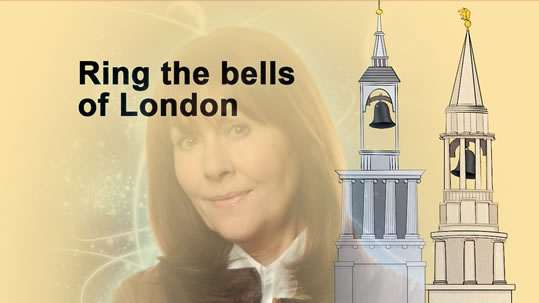
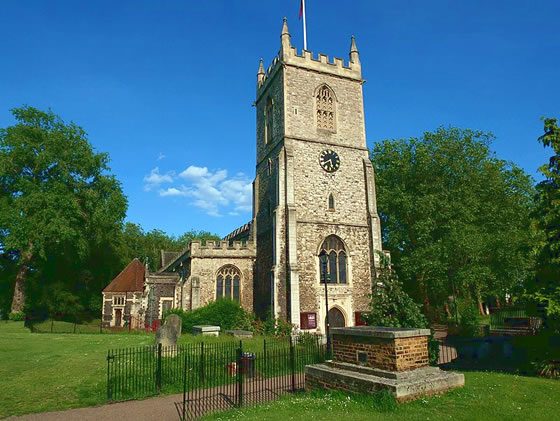
Pray when will that be? Say the bells of Stepney.
The Church of St. Dunstan and all Saints was the source of those badly rhyming Stepney bells. Set in a green garden, it reminded Sarah-Jane of the rural parish church in the village her parents had lived in when she was a baby. Not that she was nostalgic. She didn’t really remember the village or her parents. But it was more like a country church than one set in the middle of the East End of London, sitting there for centuries while the tightly packed homes of working-class Londoners grew around it.
Its website assured them that it was a vibrant and thriving parish despite the cultural mix of the East End. It also assured the reader that this was definitely the home of the Stepney bells. The fact was reinforced by a Mr. Hawthorne, who met them by the door to the square tower with a clock set in it that reminded them they were on a time-limited mission. He mentioned the rhyme as his churchwarden’s keys jangled in the lock. He continued the theme as they climbed the steps. Sky wondered to herself how one couplet of ten words in total could lead to such a monologue and whether he really expected Sarah-Jane to write an article on such a limited topic. She wasn’t sure she could manage more than a paragraph. Perhaps she didn’t have either a journalist’s or a churchwarden’s knack for padding out a topic.
Sarah-Jane turned the conversation to the history of the fifteenth century church that replaced the tenth century one that was founded by Dunstan, Lord of the Manor before he was a saint. This church survived both the Great Fire and the Blitz and was known as "The Mother Church of the East End", with prayers and special services for the bombed-out citizenry throughout the war.
Sky didn’t listen. Not because she wasn’t sympathetic towards wartime London, but because she was doing her job again at the bell loft, listening to the tone of the bell as it was changed under her hand and a magnet that came from the fastener of one of Sarah-Jane’s old handbags.
When it was done, and they descended the tower, Sarah-Jane used the pretext of calling Luke to sit on a bench in the churchyard again. He happily reported that they were back on course to complete the quest on time.
“Glad to hear it,” she replied. “I could really do with a cuppa by now, but we’d better all press on. Sunset is horribly close, now.”
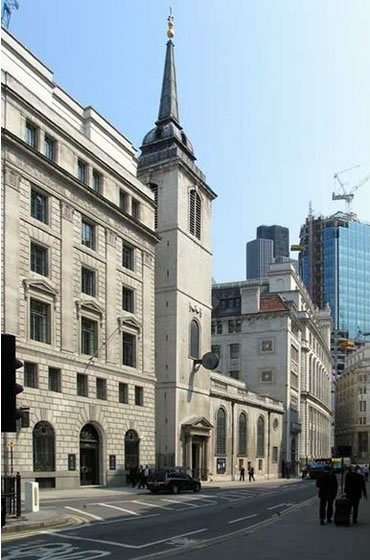
Bull's eyes and targets, Say the bells of St. Margaret's.
Luke wondered if the ‘Bulls eyes and Targets’ were anything to do with the medieval law requiring citizens of London to practice archery regularly. Perhaps it had happened somewhere in the Lothbury area. The parish was joined with Woolwich, site of the arsenal that the football team got its name from, which might have something to do with it. But there was no information anywhere, not even on Wikipedia, to confirm his theory. When he had more time, he thought he might look into it. But for now, he had a quest to complete.
St. Margaret’s Lothbury was another Wren church squeezed between mid-nineteenth century Portland stone and late-twentieth century glass and steel commercial buildings. It was quite simple on the outside, but very lovely inside. If he had been less busy Luke would have admired the stained-glass windows, the elaborately carved choir screen and the baptismal font shaped like an ark and standing on a compass rose.
Mr Greenwood, the elderly churchwarden who showed him around would have talked to such a well-spoken Cambridge post-graduate at length about those and other features of the church, but Luke gently but firmly steered the conversation to the bell tower. This, in fact, was not the work of Sir Christopher Wren, but Robert Hooke, Surveyor to the City of London and chief assistant to Wren in his work of rebuilding the City. Luke knew of him from Hooke’s Law, an absolute of physics which determined, in the simplest terms, how much pressure can be everted on any elastic material before it either snaps back or breaks – or, as one of his fellow students had put it – how to straighten a slinky.
But that was not something the churchwarden knew about. As they climbed the tower, he was at pains to tell Luke all about the major restoration four years ago, thanks to generous heritage lottery funding. Luke was a little concerned that the bells might have been replaced or otherwise interfered with, but Mr Greenwood was quick to reassure him. The three bells, hung in 1682, 1749 and 1841, were all cast at the Whitechapel foundries and had been in place ever since those dates.
It was the eighteenth-century bell that ‘sang’ when Luke touched it with a small magnet he had taken from an old stereo speaker. The churchwarden nodded as he watched him do so.
“You’re tasked with soothing the dragon, then?” he said. “I heard the tale from my grandfather, you know. Once in a half a dozen generations it has to be done or the great dragon beneath the old City will wake and destroy us all. My father said it was nonsense, and blasphemous, too. He was strict about such things. But I always secretly knew it wasn’t. A city like this had to have a dragon.”
“Yes,” Luke agreed, though he had no idea what the ld man meant. Madame’s letter had only mentioned a terrible disaster.
A ‘great’ dragon waking up under the city would surely be a disaster. Transport for London and Crossrail were likely to be upset, at the very least.
He didn’t have to pretend he was interested in the architecture on the way down.
“You’ve a few more bells to calibrate?” Mr Greenwood asked.
“Four… and St. Paul’s,” he answered. “Not just me. My mum and my sister and two friends. We should be done by sundown.”
“St Pauls?” The old churchwarden queried. “You’ll be meaning the Cathedral? Wren’s masterpiece and slap in the middle of the City?”
“Well, yes,” Luke answered. “Not all the bells are in Wren churches, but MOST of them are, so it’s the obvious last place to go.”
The churchwarden nodded, then told Luke something he didn’t know, despite spending most of his life in London – something that might be very important to the quest.
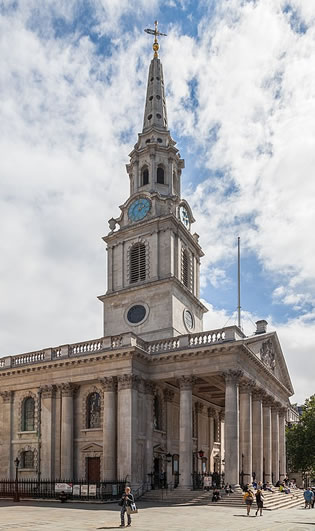
Halfpence and farthings, Say the bells of St. Martin's.
St Martins in the Fields was not in a field. It might have been once, but now it was on the corner of Trafalgar square and kept elegant company with the British Museum and the National Gallery which came along in the nineteenth century along with the square commemorating Nelson’s 1805 naval victory.
“Seems to fit in with its surroundings,” Rani commented. “All the columns and pediments, just like the museums. Funny, though, how many of the Christian churches in London are in that style – harking back to ancient Greece, BEFORE Christianity.”
“That’s because Wren was big into the classic style, and nearly everybody else followed him – at least until the mid-nineteenth century when the likes of Pugin brought neo-Gothic into fashion. And do you knows how bored I was when I covered all that stuff in my first year art and architecture module? It’s a wonder any of it stayed in my head. I actually prefer the neo-classic to the neo-gothic. And if you were to tell you dad that, he’d only be surprised that I have an opinion on architecture at all. He didn’t expect me to even SPELL architecture.”
“Dad was wrong. So were most of the teachers and they ought to be ashamed to pigeonhole anyone like that.”
The neo-classical interior of the church was as impressive as the exterior and the nave provided a quiet place for reflection and possibly even prayer. Rani found herself wondering how much of the latter actually DID go on. Between classical music and a café in the crypt and a small art exhibit in the Narthex it seemed to be more like an annex to the museums and gallery than a place of worship.
But at least that meant it was open all day and there were plenty of people around to cover them going up to the bell tower.
“Not the ones,” Rani said as they came back down again. “There was no ‘song’ from any of them.”
They were running against the clock, but even so, they got a cup of tea in the crypt and carefully checked up on their tablets, finding the clue to the problem on the last place they thought to look – Wikipedia.
“Twelve historic bells from St Martin-in-the-Fields, cast 1725, are included in the peal of the Swan Bells tower in Perth, Australia. The current set of twelve bells, cast in 1988, which replaced the old ones are rung every Sunday between 9 am and 10 am by the St Martin in the Fields Band of Bell Ringers. The bells are also rung by the Friends of Dorothy Society each year as part of London Pride.”
“Well, kudos to them all round,” Rani commented. “A Christian church respecting LGBT is great. And the tower in Perth looks amazing. But it’s a bit out of our comfort zone.”
“I don’t think they WERE the ones, now I look at it,” Clyde answered. “The original bells were cast in Gloucester. Most of the bells we’ve seen so far came from the Whitechapel foundry, or at least other London foundries – back when London had loads of that sort of thing. Six of the new bells DO came from Whitechapel, but 1988 is too late for something last visited by Madame Vastra.”
“So… we’re stuck?”
“Wait….” Clyde reached for his phone and hit a speed dial number. “Sarah-Jane – you need to go back to St. Clement’s Eastcheap and get them to open up the bell tower from a mostly demolished church of St. Martin’s Orgar – we missed it because it isn’t a church anymore. It’s on Cannon Street, not far from where you were earlier.”
Sarah-Jane agreed to fit in the other St. Martins.
“I hope we’re right,” Rani said. “Otherwise, the whole thing is ruined. All that climbing stairs, being patronised by people who think only white folk should go to church… all the tube journeys....”
“And a disaster befalling London if we fail,” Clyde added. “Though if it was anyone other than Madame Vastra, or maybe The Doctor herself, telling us to do this I’d think it was a scam.”
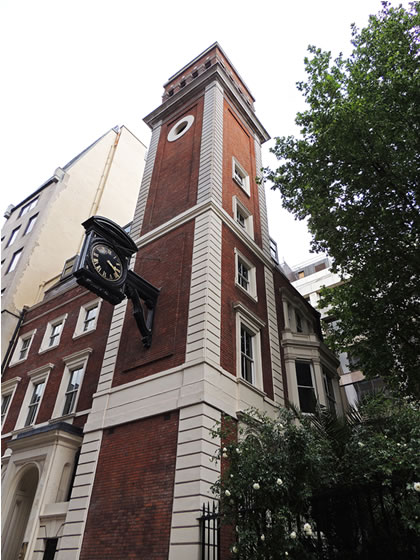
You owe me five farthings, Say the bells of St. Martin's – the other one.
Sarah-Jane had thought much the same thing. It DID seem ridiculous that calibrating a nearly inaudible ‘tune’ on a series of church bells could prevent a catastrophe in London – modern London of the skyscrapers and Millennium Wheel and all.
The nice Mr Hardman of the St. Clement’s Eastcheap bell ringers met them again at the remnant of St. Martin Orgar. Sarah-Jane’s prestige as a journalist still inspired him to help.
“It’s not JUST for an article, is it,” he said when they reached the bell loft of the old tower, which was less forlorn than might be expected due to the attentions of the bell enthusiasts. This time he paid more attention to Sky’s activity beside the bell. “You’re lulling the dragon, aren’t you?”
“Errrr….” Sarah-Jane hesitated.
“Only a few of us know the story – mostly campanologists. The dragon lived under Ludgate Hill long before it WAS Ludgate Hill. It grew until it stretched under all three of the hills of the City – Ludgate, Cornhill and Tower Hill as we know them now. The Romans had a temple to one of their heathen gods not so far from where St Pauls was built when Christianity came to the city, and all their activity kept it soothed. As the city expanded, it took the bells from at least two dozen churches to keep the old girl quiet. It was a near thing after the Great Fire. It is why Sir Christopher and Hawksmoor and the rest were so anxious to build churches when it would seem like houses were more vital. They couldn’t risk breaking the chain for long. A few of the originals are gone since, but as long as those that are left stay in tune, we’ll be all right.”
Sarah-Jane would have liked to have asked what a sleeping dragon several miles long ate and other complicated questions like that, but she decided to take a few things on faith. She wondered if Madame Vastra even knew the whole story. The dragon must have been there even before her people arrived. Probably, like the Loch Ness Monster, it was a throwback to the dinosaurs.
Or it might just be an allegory or just a wonderful fiction. But Sarah-Jane wasn’t taking any chances. Madame Vastra believed the calibration had to be done and that was good enough.
Sky nodded happily to show that all was well. The Bells of St. Martins Orgar were singing, even if the church was long gone.
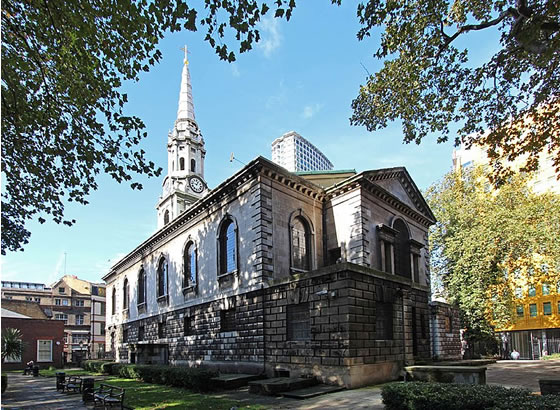
Brickbats and tiles, Say the bells of St. Giles'.
Like St. Martins of Trafalgar Square, it was a long time since St. Giles in the Field had actually been in a field. One of the earliest churches to stand there dated from the early Norman era when ‘London’ the walled city more or less covering the commercial City of modern times and Westminster, with its abbey and royal palaces were separate places. St. Giles had been a monastery and leper hospital more or less equidistant from the two at a time when such things were unwelcome in the populated areas. By the Dissolution and the Reformation that made it an Anglican place of worship London had grown around it. Civil war, plague, peasant’s uprisings and Catholic plots had made the years turbulent as well as the Great Fire and the Blitz that were the largest events in London history, generally. And now, against a society growing sceptical of religion the church stood in what was left of its field not far from the busy Charing Cross Road.
Luke knew all of its chequered history because he was Luke and he only had to look at a website about a place like St. Giles to know it all. He appreciated the Mid-Eighteenth century Palladian style of the exterior because he knew how to appreciate such things. He admired the beautifully preserved interior.
What he didn’t really have was any sense of awe about it as a place of worship. Religion was an intellectual puzzle to him. The Bane had created him with knowledge of most of the major faiths and the reasons why so many of them were suspicious of the others. But he felt nothing in his soul. Indeed, he sometimes wondered if he HAD a soul. He couldn’t imagine that the bane had thought he needed one.
Or perhaps it happened naturally in humans no matter how they were created? The answer to that question was one of the few things beyond his intellect. Perhaps one day he should find a church and talk to somebody there. He just wasn’t sure how to explain being created by the bane at the age of twelve to a vicar.
A choir practice – the St. Giles choir was a matter of some pride according to their website – was ongoing when he came into the church, so getting up to the bell tower wasn’t a problem.
And there, above the sound of the choir, the bell sang for him as he expected.
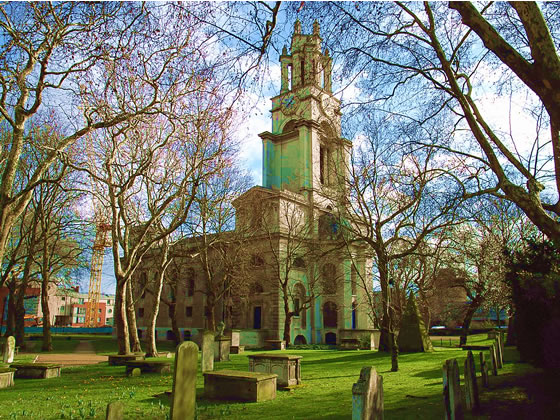
Kettles and pans, Say the bells at St. Ann's.
“This and one other are the only churches on our list done by Nicholas Hawksmoor,” Clyde said vas they approached St. Ann’s, Limehouse.
“I saw something about Hawksmoor when we were looking up the churches,” Rani answered. “But I don’t know why he’s important.”
“He had big plans for London after the fire along with Wren, but he only got to do six churches in the end. Wren was a bit pushy about it, I think. But there are loads of conspiracy theories about the six – if you draw lines between them on a map you get an occult symbol, and there are stories about supernatural stuff. Mostly rubbish, but I expected this to tie in somehow. I guess it doesn’t except it was built about the same time and in a similar style.”
Considering that it was in Limehouse, part of the old East End of slums and opium dens, it was set in a pleasant bit of garden – unlike the tightly packed churches in the wealthier City of London where square feet of building land were at a high premium.
They were expected. Or at least a journalist from the Guardian was expected. Rani and Clyde both recognised that slight flicker of expression they got from white people from time to time. It had happened very much more today than any other day. People really didn’t seem to think that church-going was a ‘black thing’.
Not that anything was said – apart from the young man at St Mary-le-Bow who now thought Rani was the slaughter of the Bishop of Blackburn, they were all too polite and, presumably, too Christian, to be openly racist. But Clyde and Rani both knew that the subtle kind could be just as bad.
“Did you notice the flag on our tower?” asked the churchwarden who introduced himself as James Trantor. “Queen Anne gave St. Anne's Church the right to display the second most senior ensign of the Royal Navy, the White Ensign. Because the flagpole with the golden ball at the top can be seen from the river it became a Trinity House "sea mark" on navigational charts, and the Queen's Regulations still permit St. Anne's Limehouse to display the White Ensign 24 hours a day, 365 days a year.”
“I didn’t know that,” Rani said, wondering who, other than Mr Trantor or possibly Admiral Horatio Nelson WOULD know that.
“You must go through a lot of flags with the wind off the Thames,” Clyde commented, not entirely seriously. Mr Trantor looked at him a little suspiciously but admitted that there WAS, indeed, a lot of depletion of flag material. But the Admiralty supplied new ones. They did not have to come out of parish funds.
The bells were just below the flagpole at the top of the tower, and from the window there was a view right across to the river. In Queen Anne’s time it would have been a busy view of a port that served an Empire. Now it was much quieter and nobody talked about the Empire.
But the bell sang beautifully and that was another one down.
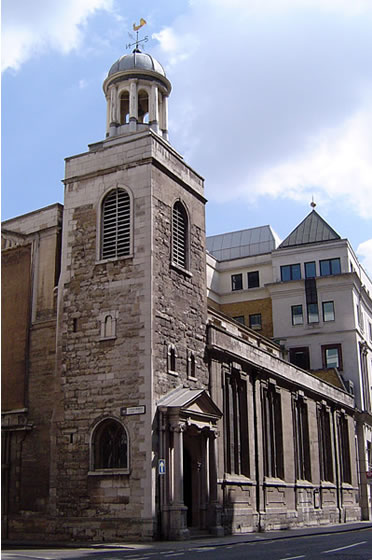
Maids in white Aprons, Say the bells of St Katherine's.
Luke walked from St. Margaret Lothbury to Leadenhall street and The Guild Church of St Katharine Cree. He knew from his research yesterday that it was the only remaining Jacobean church in the City of London, which meant it looked very different from the white wedding cake style that Wren and the seventeenth and eighteenth century architects favoured. It was a historical survivor amongst a plethora of ultra-modern glass and steel, from the Lloyds building to The Cheesegrater, and boards announcing new developments threatened to encroach. Not surprisingly, St. Katherine’s was a Grade I listed building. The ‘Cree’ part of the name derived from an old English spelling of Christchurch.
While almost everything else in the neighbourhood, even the old St Paujl’s Cathedral had been lost in the Great Fire of 1666, St Katharine Cree had survived. The blitz on the heart of London also manged to miss it, though it hit plenty of other buildings around the commercial heart of the City.
It was a survivor.
As a guild church of the City, it boasted a vaulted ceiling in the nave ewit the bossed of sixteen old livery companies of London, the ancient guilds who paraded in November for the Lord Mayor’s show.
In short it was a church with the history of London in its very fabric. Luke wondered if he ought to feel something deep inside himself about that, but again it seemed the Bane had missed things like civic pride from the jigsaw of his being.
The only thing that worried Luke as he climbed the steps inside the square tower was the fact that the bells had not been run between 1880 and 2009 when a massive and expensive restoration project took place. He wondered if they were the bells Madame and Jenny had visited in 1922, after all. Not for the first time he wondered why they hadn’t just made a list.
But as long as the bells were there, did it matter? Perhaps it had been quietly singing all along, keeping the ‘dragon’ asleep.
Anyway, it was done. Only two more bells to calibrate, and his mum and sister were dealing with one of them.
Two if what he had learned from Mr Greenwood at St Margqaret’s Lothbury had told him was of any value.
It could be.
He found his phone and called Clyde.
“Are you two heading to St. Paul’s Cathedral?” he asked.
“We’re just there,” Clyde answered. “What about you?”
“I’ve got something else to do. When you’ve checked it out, meet me at the outdoor café in Covent Garden. I’m going to text mum to join us there.”
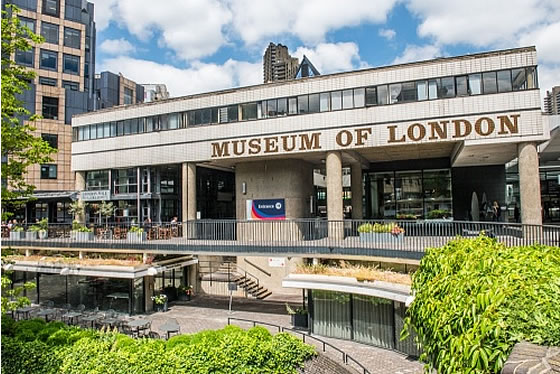
Two sticks and an apple, Say the bells at Whitechapel.
“Why are we here?” Sky asked, looking up at the brutalist blank wall with the words ‘Museum of London’ so boldly written across it that she wondered if people had mistaken it for a car park or bus depot.
“There is no suitable church in the Whitechapel district, even though the road was originally named after a small white chapel. The closest I could find with a proper peel of bells is St. George in the East, but that’s closer to Wapping than Whitechapel. Then I realised that most of the bells we’ve gone to today came from the Whitechapel Bell Foundry – or properly speaking foundries. There were dozens of companies all along the same road when metal-working was a craft rather than an industrial process. The bells at Whitechapel were the ones being MADE at the foundry.”
“But we’re not at the Whitechapel Bell Foundry, either,” Sky pointed out as they stepped into the museum atrium and Sarah-Jane asked at the reception for a Mr John Ringman. Sky didn’t dare comment about seeing a man called ‘Ringman’ about bells.
“The Whitechapel Bell Foundry closed in 2017,” Sarah-Jane explained. “I did a small piece about it at the time – last bastion of industrial London, that sort of thing. I met Mr Ringman when the last bell to be cast at the foundry was brought to the museum.”
Mr Ringman was dressed in shirt sleeves and a Museum of London nametag with ‘Archivist’ beneath his name. He shook hands warmly with both Sarah-Jane and Sky and without any small talk led them to the bell.
“The last bell was made to a specific ‘recipe’ handed down for centuries,” he explained. “Only a few people have ever known the reason.”
He watched with Sarah-Jane as Sky pressed the magnet to the bell as tall as she was. She smiled to hear the same ‘song’ she had heard at St. Johns in Waterloo this morning when they started the quest. As strange as it was to come here to a museum, it still completed their part in it all.
“The museum is moving in a few months,” Mr Ringman said as they headed for the way out. “We’re going to the old Billingsgate market. It is an historic building to go with our story of London, and it brings the bell closer to its companions in the City. The dragon will be content.”
“How many people KNOW about the dragon?” Sky asked, curiously.
“A few,” Mr Ringman said. “A few who know for certain. The keepers of the secret. Some have heard the story but dismiss it as fantasy. Most of the population are oblivious. And so they should be. They don’t need to be thinking of it on the Circle Line going to work. We who are in the know are a select group.”
“Well, we’re glad to be a part of the select,” Sarah-Jane said. “We were brought into it by a lady who lived a hundred years ago. I’m wondering who we’ll pass it on to a hundred years from now. it will have to be Sky’s grandchildren, I think.”
Sky was a little disconcerted to think of her own future grandchildren in 2122, a date so very far away, doing this all again. What would London be like by then? Would all those churches survive the ‘modern’ world for another century?
“Anyway, St. Paul’s Cathedral, next?” Sky asked as they crossed the circular garden outside the museum.
“No,” Sarah-Jane answered looking at a text on her phone. “Luke says we’re to go to Covent Garden for coffee.”
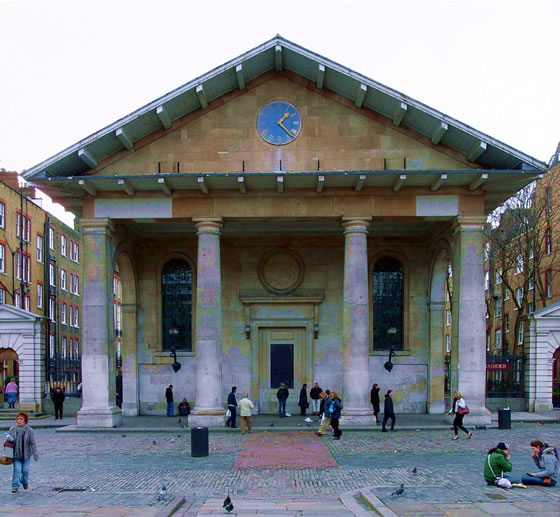
When I am Old, Ring the Bells at St. Pauls.”
Sarah-Jane and Sky reached the plaza where the Royal Opera House met the old Covent Garden Market almost at the same time as Clyde and Rani. All wanted to talk at once, but Luke made them all sit down and drink coffee before anything else.
“It’s getting dark. The equinox day is over,” Sarah-Jane pointed out. “What happened at St. Pauls?”
“It was a bust,” Clyde answered. “The bells there don’t sing.”
“Not even ‘great Paul’, the biggest one, the famous one,” Rani added.
“I knew it wasn’t right when I read about the casting of it,” Clyde continued. “Most of the bells we saw today were made in London. Great Paul was made by John Taylor in Loughborough.”
“It’s only partly about the Whitechapel Foundry. Most of the bells were made there, but I think even those that weren’t had something put into them – the thing that makes them magnetic makes them ‘sing’ to the dragon. The bells were all cast by people who knew the secret.”
“Including Taylor of Loughborough,” Sarah-Jane suggested. “They recast the Shoreditch bells in 1994. We were told that – but they used metal from the old bells in the work… they left the song in them.”
“Same Taylors who did Great Paul?” Rani suggested. “But St Paul’s wasn’t right. And we’re too late, now. We failed. Do you really think the dragon….”
“See that building over there….” Luke pointed to a classical portico with the columns and pediments so familiar in the seventeenth and eighteenth century churches they had been visiting. Until he pointed it out, they hadn’t even realised it was a church.
They looked back at Luke.
“St Paul’s Church,” he said. “Not the Cathedral. Built by Inigo Jones, in 1633 – another one that survived the Great Fire. Which makes it older than the cathedral. And its bell is from Whitechapel. It’s known as the Actor’s Church because a lot of actors were buried in its churchyard back when the Opera House was just the Theatre Royal.”
“You went up there?”
“I did. And it’s the one. We’ve done it. So, we don’t know if the dragon exists or not. Because it’s still asleep.”
“Let it stay asleep,” Sarah-Jane said. “I’m just glad it doesn’t have to be soothed again for a century. I’ve no intention of being around for a repeat – not without The Doctor and her TARDIS to get there.”
The others were too young to contemplate their own mortality, but they fully agreed.

 |
 |
 |